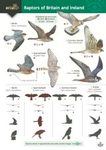![Population Demography of Northern Spotted Owls Population Demography of Northern Spotted Owls]()
Click to have a closer look
About this book
Contents
Customer reviews
Biography
Related titles
About this book
The Northern Spotted Owl, a threatened species that occurs in coniferous forests in the western United States, has become a well-known environmental symbol. But how is the owl actually faring?
This book contains the results of a long-term effort by a large group of leading researchers to document population trends of the Northern Spotted Owl. The study was conducted on 11 areas in the Pacific Northwest from 1985 to 2008, and its objectives were both to evaluate population trends and to assess relationships between reproductive rates and recruitment of owls and covariates such as weather, habitat, and the invasion of a closely related species, the Barred Owl.
Among other findings, the study shows that fecundity was declining in five populations, stable in three, and increasing in three areas. Annual apparent survival rates of adults were declining in 10 out of 11 areas. This broad, synthetic work provides the most complete and up-to-date picture of the population status of this inconspicuous forest owl, which is at the center of the complex and often volatile debate regarding the management of forest lands in the western United States.
Contents
INTRODUCTION
STUDY AREAS
FIELD METHODS
ANALYTICAL METHODS
DEVELOPMENT OF COVARIATES
Barred Owl covariate
Habitat covariates
Weather and climate covariates
Land ownership, ecoregion, and latitude covariates
Reproduction covariate
FECUNDITY
Individual study areas
Meta-analysis of fecundity
APPARENT SURVIVAL
Individual study areas
Meta-analysis of apparent survival
ANNUAL RATE OF POPULATION CHANGE
Individual study areas
Estimates of realized population change
Meta-analysis of annual rate of population change
STATISTICAL CONVENTIONS
WORKSHOP PROTOCOLS
RESULTS
FECUNDITY
Individual study areas
Meta-analysis of fecundity
APPARENT SURVIVAL
Individual study areas
Meta-analysis of apparent survival on all areas
Meta-analysis of apparent survival on the eight NWFP monitoring areas
Potential cost of reproduction on survival
Effects of Barred Owls on recapture and survival
ANNUAL RATE OF POPULATION CHANGE
Individual study areas
Estimates of realized population change
Meta-analysis of annual rate of population change
DISCUSSION
FECUNDITY
APPARENT SURVIVAL
ANNUAL RATE OF POPULATION CHANGE AND REALIZED RATES OF POPULATION
CHANGE
Individual study areas
Meta-analysis of annual rate of population change
STATUS OF OWL POPULATIONS IN THE EIGHT NWFP MONITORING AREAS
ASSOCIATIONS BETWEEN DEMOGRAPHIC PARAMETERS AND COVARIATES
Cost of reproduction on survival
Weather and climate
Barred Owls
Habitat
POTENTIAL BIASES IN ESTIMATES OF DEMOGRAPHIC PARAMETERS
Fecundity
Apparent survival
Annual rate of population change
Estimating goodness-of-fit and overdispersion
SUMMARY, CONCLUSIONS, and RECOMMENDATIONS
ACKNOWLEDGMENTS
LITERATURE CITED
APPENDICES
TABLES
FIGURES
Customer Reviews
Biography
Eric D. Forsman, who collaborated with a team of twenty-seven researchers to produce this report, is a Wildlife Biologist with the USDA Forest Service's Pacific Northwest Research Station, and also holds a courtesy faculty position as an Associate Professor in the Department of Fisheries and Wildlife at Oregon State University.












































